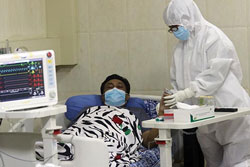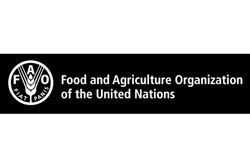
|
July 03, 2020 NEWSLETTER |

|
|
Bangladesh approves $66.7 billion budget, targeting 8% growth Bangladesh’s National Parliament passed a $66.7 billion budget for 2020-21 fiscal year, targeting 8.2% GDP growth, protecting people and recovering from the economic losses amid COVID-19 pandemic. Themed on ‘Economic Transition and Pathway to Progress’, in this budget the government will discourage luxury expenditures and prioritise government spending that creates job. Secondly, the government is creating loan facilities through commercial banks at subsidised interest rate for the affected industries and businesses, along with expanding the coverage of the government’s social safety net programmes to protect the extreme poor and low paid workers of informal sector from the sudden loss of their source of earning due to pandemic. Finally, the government will increase money supply to the economy while making a delicate balance between increased money supply and possible inflationary pressure. |
|
Bangladesh offices to operate on limited scale until Aug 3 
The government has decided to allow offices and other workplaces to continue operating on a limited scale until August 3 amid the coronavirus epidemic. Moreover, the curbs on public transports and general movements will also remain effective for the said time while the stay-at-home rules requiring citizens to remain indoors from 8pm to 6am barring emergencies, have been relaxed as well. Citizens must now remain at home from 10pm to 5am while they are to wear masks at all times when venturing outside. Legal action will be taken against those who defy the orders. |
|
Mega plan for modern healthcare system 
A mega plan has been adopted by the government to modernise the healthcare system with particular focus to make the hospitals capable of facing any future Covid-19-like crisis. Apart from the recruitment of huge number of doctors, nurses and technologists, adequate number of new hospital buildings will be constructed, latest technologies adopted through purchasing modern medical equipments and adequate number of ambulances and other support vehicles purchased. To this goal, the budgetary allocations for the health sector have been substantially increased. As part of the plan, Prime Minister Sheikh Hasina in late May approved a proposal to recruit further 2,000 doctors and 3,000 health technologists, technicians and radiographers to face the increasing demands in the fight against coronavirus (COVID-19) outbreak in Bangladesh. |
|
Life expectancy at birth rises 
Life expectancy at birth for Bangladeshis has risen to 72.6 years because of what experts said was progress made in healthcare and economy. This marks a rise of 1.7 years since 2015, according to the Sample Vital Registration System (SVRS) 2019 launched recently by the Bangladesh Bureau of Statistics (BBS). Experts attribute this rise to the economic development, expansion of health services, better access to health care facilities and improvement in nutrition. Maternal mortality rate came down to 1.65 per 1,000 live births in 2019 from 1.81 in 2015. The under-five child mortality rate fell to 28 per 1,000 live births in 2019 from 36 in 2015. |
|
Country’s food grain availability adequate: FAO study 
According to a recent study titled “Rapid Assessment of Food and Nutrition Security in the Context of COVID-19 in Bangladesh”, conducted by the FAO , Bangladesh has adequate stock of food grain and is expected to have surplus food stock in the post-pandemic situation. “Bangladesh consumes 32 MMT of rice and 5.5 MMT of wheat annually. The country expected in fiscal year 2019/20 to have produced 38.7 MMT of rice and 1.25 MMT of wheat – and to have imported 5.2 MMT of wheat”, said the report. “Besides, during the Aman season, the production was more than the target. All in all, the country has a surplus of granular foodgrains owing to better rice production conditions”, added the report. |
|
Digital Bangladesh becomes boon for students 
The government’s ‘Digital Bangladesh’ endeavor has become a boon for the country’s around 40 million students as digital devices are now their only way to continue learning due to unexpected closure of their educational institutions for more than three months over the coronavirus (COVID-19) pandemic. Just few days after the closure of educational institutions, in the wake of the pandemic, the primary, secondary and higher education directorates started disseminating digital lessons through state-run Sangsad Television as well as various online platforms like YouTube and Facebook. Moreover, the government has instructed all colleges and universities for taking online classes to keep students in touch with academic activities from home. |
|
Improving Road, Rail Networks: Govt, ADB sign $142m deals 
The government and Asian Development Bank (ADB) signed two agreements for the improvement of country's road and rail networks. The $100 million agreement of concessional loan was signed to expand the coverage of an ongoing rural road network improvement project, connecting the rural population to agricultural land, markets and services. Another $42 million agreement in concessional loan was signed for a project to prepare road and railway sector projects to promote multi-modal transport, and connectivity. The expanded project will benefit around 90 million inhabitants in 34 districts with access to better health services, education, employment opportunities, markets and other government services. |

|
|
BANGLADESH AWAMI LEAGUE |




|